I’m going to start this article with the conclusion (spoiler alert!). You really must see this world-class team’s display if you ever get the opportunity, they are absolutely fantastic. What more can I say? 😉
 Most aviation minded people are aware of the various major international aerobatic teams around the world; The United States’ Thunderbirds and Blue Angels, the Red Arrows from the United Kingdom, Italy’s Frecce Tricolori, Patrouille de France and so-on and, of course, here in Australia we have our very own RAAF Roulettes. But tucked away in various corners of the world are many other, lesser known teams that perform amazing routines of national pride and aviation skill, largely unheralded outside of the own countries. The Black Eagles is one such team (but that is starting to change).
Most aviation minded people are aware of the various major international aerobatic teams around the world; The United States’ Thunderbirds and Blue Angels, the Red Arrows from the United Kingdom, Italy’s Frecce Tricolori, Patrouille de France and so-on and, of course, here in Australia we have our very own RAAF Roulettes. But tucked away in various corners of the world are many other, lesser known teams that perform amazing routines of national pride and aviation skill, largely unheralded outside of the own countries. The Black Eagles is one such team (but that is starting to change). The Black Eagles are the national military display team of the Republic Of Korea Air Force (ROKAF) which fly nine (eight with a spare) Korean Aircraft Industries (KAI) T-50B Golden Eagle jet trainers (making it one of the very few teams in the world equipped with a supersonic aircraft) in a very striking black, white and yellow colour scheme. ASO’s Motty was given a very rare opportunity to talk with a few members of the team to learn more about their display, aircraft and history during the 2015 Aviation and Defence Exhibition (ADEX) held in Seoul last year.
The Black Eagles are the national military display team of the Republic Of Korea Air Force (ROKAF) which fly nine (eight with a spare) Korean Aircraft Industries (KAI) T-50B Golden Eagle jet trainers (making it one of the very few teams in the world equipped with a supersonic aircraft) in a very striking black, white and yellow colour scheme. ASO’s Motty was given a very rare opportunity to talk with a few members of the team to learn more about their display, aircraft and history during the 2015 Aviation and Defence Exhibition (ADEX) held in Seoul last year.
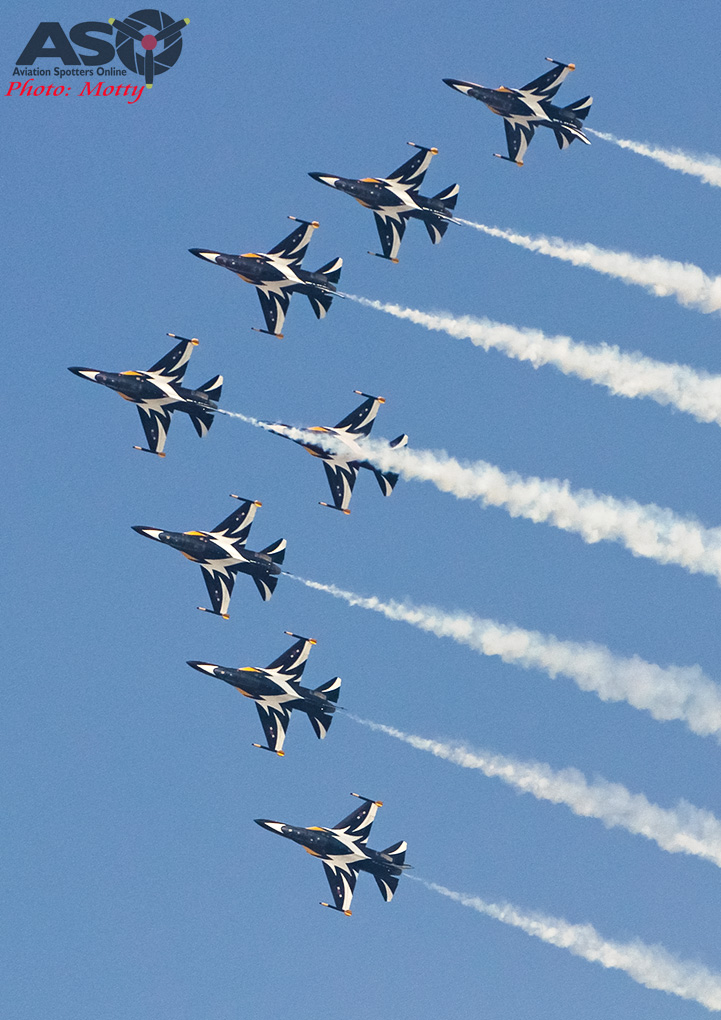 The team has a long and proud history, through various incarnations, aircraft and names, dating back to 1953 when the first formation displays were performed by an un-named team flying F-51 Mustangs. In 1956 a group known as the Show Flight Team began performing displays T-33s until, in 1959, the first formally organised and recognised team, known as the Blue Sabres, was formed, flying (not surprisingly) F-86 Sabres. Being a secondary duty for operational units, the duties of the Blue Sabres were shared between the 10th and 11th Squadrons, alternating with one year “on” and one “off” for each unit.
The team has a long and proud history, through various incarnations, aircraft and names, dating back to 1953 when the first formation displays were performed by an un-named team flying F-51 Mustangs. In 1956 a group known as the Show Flight Team began performing displays T-33s until, in 1959, the first formally organised and recognised team, known as the Blue Sabres, was formed, flying (not surprisingly) F-86 Sabres. Being a secondary duty for operational units, the duties of the Blue Sabres were shared between the 10th and 11th Squadrons, alternating with one year “on” and one “off” for each unit.
In 1966, for the first time, a stand-alone, dedicated formation display team called the Black Eagles was formed, flying F-5A Freedom Fighters. After a break in operations between 1970 to 1972, they converted to the RF-5A version in 1973 before disbanding once again in 1978 as the ROKAF focussed on maintaining a higher level of preparedness. They were reformed once again in 1994, this time operating the A-37B Dragonfly and I was lucky enough to see the Black Eagles make their final appearance in their venerable A-37s at the Seoul 2007 ADEX show, after which they disbanded temporarily to convert onto their current mount, the KAI T-50 Golden Eagle trainer.

The shape of things to come. Two of the Black Eagles’ A-37Bs bask in the evening light at the end of their final show with the type at Seoul in 2007, with an example of what would become the team’s new mount, the T-50, waiting in the wings behind.
The T-50 Golden Eagle is a supersonic jet trainer developed and built by Korean Aircraft Industries in conjunction with Lockheed Martin (LM) to replace the ROKAF’s previous jet trainers, the T-37 Dragonfly and T-38 Talon. KAI had gained experience in building and developing modern, high performance military aircraft as it license-built the KF-16 version of LM’s successful F-16 Fighting Falcon family for the ROKAF, so it seemed only natural to continue the partnership when KAI began to develop plans to produce its own fast jet/advanced trainer and light attack aircraft design. So if you’d thought that the T-50 looked a lot like a smaller F-16, you’re right, it’s not a co-incidence.
 This similarity is more than just superficial too as the T-50 shares a similar cockpit layout (including a side-stick controller) and has broadly similar performance characteristics to its larger cousin as well. This is backed up by the fact that, owing to these similarities, the requirements for F-16 pilots coming into the Black Eagles are a little less than for those from other platforms as the conversion to the T-50 itself will be a little more straightforward for them. At a minimum, an F-16 pilot needs to be qualified as a four-ship flight leader with more than 600 hours flight time whereas those coming from the (R)F-4/5 or F-15K communities require more than 800 hours (as well as be qualified four-ship flight leaders) to be eligible to join the team.
This similarity is more than just superficial too as the T-50 shares a similar cockpit layout (including a side-stick controller) and has broadly similar performance characteristics to its larger cousin as well. This is backed up by the fact that, owing to these similarities, the requirements for F-16 pilots coming into the Black Eagles are a little less than for those from other platforms as the conversion to the T-50 itself will be a little more straightforward for them. At a minimum, an F-16 pilot needs to be qualified as a four-ship flight leader with more than 600 hours flight time whereas those coming from the (R)F-4/5 or F-15K communities require more than 800 hours (as well as be qualified four-ship flight leaders) to be eligible to join the team.
 Powered by a single General Electric F-404 with an afterburner producing over 17,000 Lbs of thrust, the T-50 is capable of an impressive M1.5 and the design has been expanded beyond the original basic trainer concept into an advanced trainer and fully combat capable light attack versions with a full range of modern sensors and weapons capabilities in the TA-50 and FA-50 versions respectively.
Powered by a single General Electric F-404 with an afterburner producing over 17,000 Lbs of thrust, the T-50 is capable of an impressive M1.5 and the design has been expanded beyond the original basic trainer concept into an advanced trainer and fully combat capable light attack versions with a full range of modern sensors and weapons capabilities in the TA-50 and FA-50 versions respectively.

The FA-50 light fighter-attack development demonstrator on show at Sacheon, home of Korean Aircraft Industries (KAI) in 2013.
KAI has had international sales success with the various versions as well with 16 T-50Is in service with the Indonesian Air Force, 12 FA-50PHs currently being delivered to the Philippine Air Force, 24 T-50IQs on order for the Iraqi Air Force and 4 T-50THs for the Royal Thai Air Force. LM and KAI are also offering an upgraded T-50 T-X version to the USAF for its T-X program to replace its fleet of T-38 jet trainers.
The Black Eagles spent 2008 converting onto and training with their new aircraft and, in 2009, they made an appearance alongside the US Air Force’s renowned Thunderbirds team and their F-16s at the Seoul 2009 ADEX during the Thunderbird’s Pacific tour. Given the family resemblance between the two types, it was very interesting to see the two team’s T-50s and F-16s together.
 The initial version operated by the Black Eagles was the basic T-50 trainer (there’s no actual T-50”A” version) in the ROKAF’s standard training colours of white and orange, but in 2010 the team began to take delivery of nine unique T-50B models, built specially for them by KAI (having a local manufacturer who makes the aircraft for the national team has its benefits 😉 ). This version has dedicated modifications for the team such as an improved multi-colour smoke system, various internal and external camera locations and dedicated wing-tip mounted smoke generator and lighting pods for improved visual appearance during the team’s displays.
The initial version operated by the Black Eagles was the basic T-50 trainer (there’s no actual T-50”A” version) in the ROKAF’s standard training colours of white and orange, but in 2010 the team began to take delivery of nine unique T-50B models, built specially for them by KAI (having a local manufacturer who makes the aircraft for the national team has its benefits 😉 ). This version has dedicated modifications for the team such as an improved multi-colour smoke system, various internal and external camera locations and dedicated wing-tip mounted smoke generator and lighting pods for improved visual appearance during the team’s displays.
 The arrival of the new T-50Bs also saw the debut of a striking new colour scheme. In stark contrast to the team’s previous schemes, which had all been based around red (or orange) white and blue (or, sometimes a little black), the new scheme features an overall gloss black with white-upper and yellow-lower designs in stylised “feather” and “bird” patterns respectively, completely befitting the team’s “Black Eagles” title. The scheme actually came from a competition in 2009 in which the team asked their fans to submit their suggestions for schemes for the new T-50Bs, which received over 2,000 submissions and, after discussions and a vote, the final design ended up as a combination of two of these submissions; one being used on the top and the other underneath. The end result, as applied to such an attractive aircraft as the T-50, must surely rate as one of the most attractive and striking schemes worn by an aerobatic team anywhere and certainly looks fantastic from all angles in the air.
The arrival of the new T-50Bs also saw the debut of a striking new colour scheme. In stark contrast to the team’s previous schemes, which had all been based around red (or orange) white and blue (or, sometimes a little black), the new scheme features an overall gloss black with white-upper and yellow-lower designs in stylised “feather” and “bird” patterns respectively, completely befitting the team’s “Black Eagles” title. The scheme actually came from a competition in 2009 in which the team asked their fans to submit their suggestions for schemes for the new T-50Bs, which received over 2,000 submissions and, after discussions and a vote, the final design ended up as a combination of two of these submissions; one being used on the top and the other underneath. The end result, as applied to such an attractive aircraft as the T-50, must surely rate as one of the most attractive and striking schemes worn by an aerobatic team anywhere and certainly looks fantastic from all angles in the air.

The Black Eagles initially flew standard T-50 trainers in the ROKAF’s trainer colours as seen on this example being towed past one of their dedicated T-50Bs in the team’s striking colour scheme.
 As the Korean War ended in 1953 with a ceasefire rather than a formal cessation of hostilities, South Korea has had to remain in a heightened state of readiness and security ever since, and there have been many flare-ups and skirmishes back and forth across the border as tensions with North Korea have fluctuated over the years. This has meant that South Korean military aviation has remained almost unknown and unseen to enthusiasts and observers in the rest of the world, being seen as somewhat reclusive and secretive (and, to a great extent, still is) and this has even included the National Aerobatic Team. This changed dramatically in 2012 though when the Black Eagles made their spectacular international debut, traveling to the United Kingdom to appear at two of the world’s largest airshows, the Wadding International Airshow and the Royal International Air Tattoo (RIAT) at Fairford.
As the Korean War ended in 1953 with a ceasefire rather than a formal cessation of hostilities, South Korea has had to remain in a heightened state of readiness and security ever since, and there have been many flare-ups and skirmishes back and forth across the border as tensions with North Korea have fluctuated over the years. This has meant that South Korean military aviation has remained almost unknown and unseen to enthusiasts and observers in the rest of the world, being seen as somewhat reclusive and secretive (and, to a great extent, still is) and this has even included the National Aerobatic Team. This changed dramatically in 2012 though when the Black Eagles made their spectacular international debut, traveling to the United Kingdom to appear at two of the world’s largest airshows, the Wadding International Airshow and the Royal International Air Tattoo (RIAT) at Fairford.
 The significance of and commitment to these appearances can be gauged by the fact that, due to the great distance involved, it wasn’t something that could simply be made in a series of ferry flights. With considerable support from the ROKAF, the Korean Defence Acquisition Program Administration, KAI and Korean Air, all of the team’s aircraft were disassembled and, along with the vast array of support equipment required, flown to the UK with the help of Korean Air Cargo, where they were reassembled and test flown before making their appearances for the very appreciative crowds.
The significance of and commitment to these appearances can be gauged by the fact that, due to the great distance involved, it wasn’t something that could simply be made in a series of ferry flights. With considerable support from the ROKAF, the Korean Defence Acquisition Program Administration, KAI and Korean Air, all of the team’s aircraft were disassembled and, along with the vast array of support equipment required, flown to the UK with the help of Korean Air Cargo, where they were reassembled and test flown before making their appearances for the very appreciative crowds.
 Making their international debut in the UK was a big decision for the Black Eagles as the UK and European audiences are well accustomed to seeing some of the best aerobatic teams in the world on a regular basis at their many airshows across the years. Most notably of course, the UK’s own, highly acclaimed, Red Arrows. The team was effectively “jumping straight into the deep end” as it were and expectations were high so it is a great credit to the dedication and professionalism of the entire team that, not only did the crowds appreciate the extraordinary effort they had made to appear, or simply the chance to see such a rare appearance of a team from an exotic part of the world, but their displays and performances were widely acknowledged to be amongst the very best in the world.
Making their international debut in the UK was a big decision for the Black Eagles as the UK and European audiences are well accustomed to seeing some of the best aerobatic teams in the world on a regular basis at their many airshows across the years. Most notably of course, the UK’s own, highly acclaimed, Red Arrows. The team was effectively “jumping straight into the deep end” as it were and expectations were high so it is a great credit to the dedication and professionalism of the entire team that, not only did the crowds appreciate the extraordinary effort they had made to appear, or simply the chance to see such a rare appearance of a team from an exotic part of the world, but their displays and performances were widely acknowledged to be amongst the very best in the world.
 This was also formally recognised with the Black Eagles receiving the Boeing Trophy, awarded for the best display, at the Waddingon International Airshow and the King Hussein Memorial Sword, awarded for the best overall flying demonstration at the show, and the “As the Crow Flies” trophy for the best overall flying demonstration as voted by the Friends of RIAT, at Fairford.
This was also formally recognised with the Black Eagles receiving the Boeing Trophy, awarded for the best display, at the Waddingon International Airshow and the King Hussein Memorial Sword, awarded for the best overall flying demonstration at the show, and the “As the Crow Flies” trophy for the best overall flying demonstration as voted by the Friends of RIAT, at Fairford.
 The team have since followed up this spectacular international debut, displaying in Singapore in 2014, a somewhat easier task as the aircraft were able to be flown there, in a series of ferry flights, with the aid of external fuel tanks and it has recently been announced that the team will return to Singapore once again for displays in February 2016.
The team have since followed up this spectacular international debut, displaying in Singapore in 2014, a somewhat easier task as the aircraft were able to be flown there, in a series of ferry flights, with the aid of external fuel tanks and it has recently been announced that the team will return to Singapore once again for displays in February 2016.
 Naturally during the overseas deployments, the team have been hosted by their counterparts from the respective country; the Red Arrows in the UK in 2012 and the Black Knights in Singapore in 2014, but they have also begun a program of making personnel-only visits to different teams to develop relationships and exchange knowledge and different techniques from around the world. In 2014 they returned to visit their colleagues from the Red Arrows in the UK and visited the Patrouille-Swisse in Switzerland last year.
Naturally during the overseas deployments, the team have been hosted by their counterparts from the respective country; the Red Arrows in the UK in 2012 and the Black Knights in Singapore in 2014, but they have also begun a program of making personnel-only visits to different teams to develop relationships and exchange knowledge and different techniques from around the world. In 2014 they returned to visit their colleagues from the Red Arrows in the UK and visited the Patrouille-Swisse in Switzerland last year.
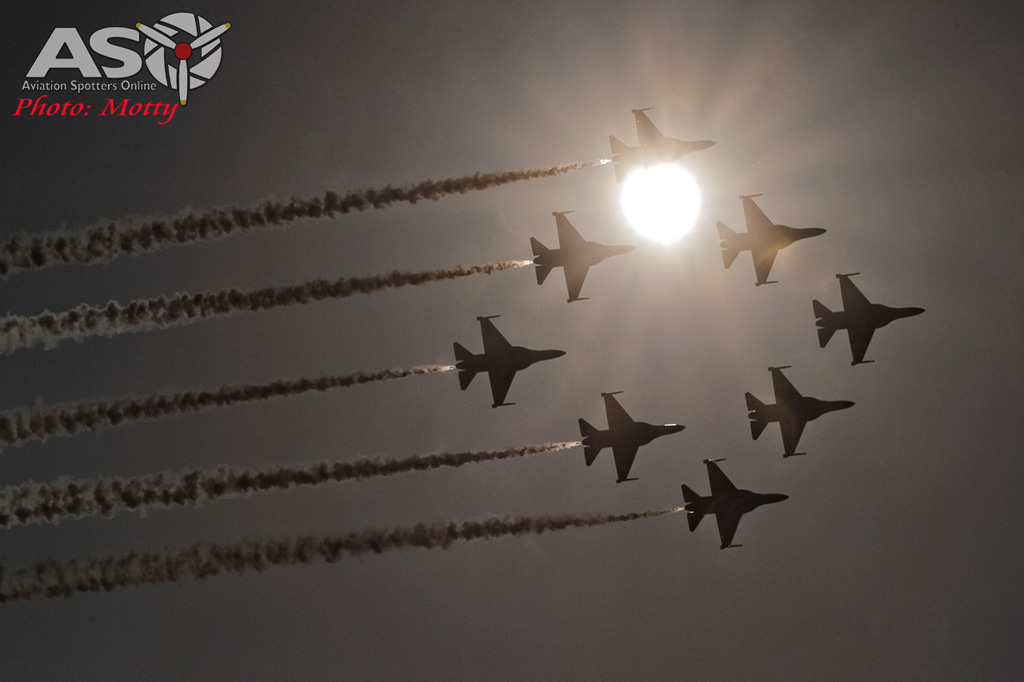 The Black Eagles are made up of a Commander (who is not one of the display pilots) and eight display pilots, about 50 maintenance crews and almost a dozen support staff for public affairs, media recording (photography, video, sound etc) and co-ordination and planning. Each pilot will spend around 3 ½ years with the team before moving on, usually to training or leadership roles, which means that there is a regular turnover of two or three pilots each year. The amount of training required for new members varies depending on the positions they will fly. The leader will usually require around 48 sorties, positions two, three & four about 43, and positions five to eight, around45 flights. The training focuses on, firstly, increasing the number of aircraft in the formation for each pilot then gradually performing the display at lower and lower heights until full proficiency is achieved.
The Black Eagles are made up of a Commander (who is not one of the display pilots) and eight display pilots, about 50 maintenance crews and almost a dozen support staff for public affairs, media recording (photography, video, sound etc) and co-ordination and planning. Each pilot will spend around 3 ½ years with the team before moving on, usually to training or leadership roles, which means that there is a regular turnover of two or three pilots each year. The amount of training required for new members varies depending on the positions they will fly. The leader will usually require around 48 sorties, positions two, three & four about 43, and positions five to eight, around45 flights. The training focuses on, firstly, increasing the number of aircraft in the formation for each pilot then gradually performing the display at lower and lower heights until full proficiency is achieved.
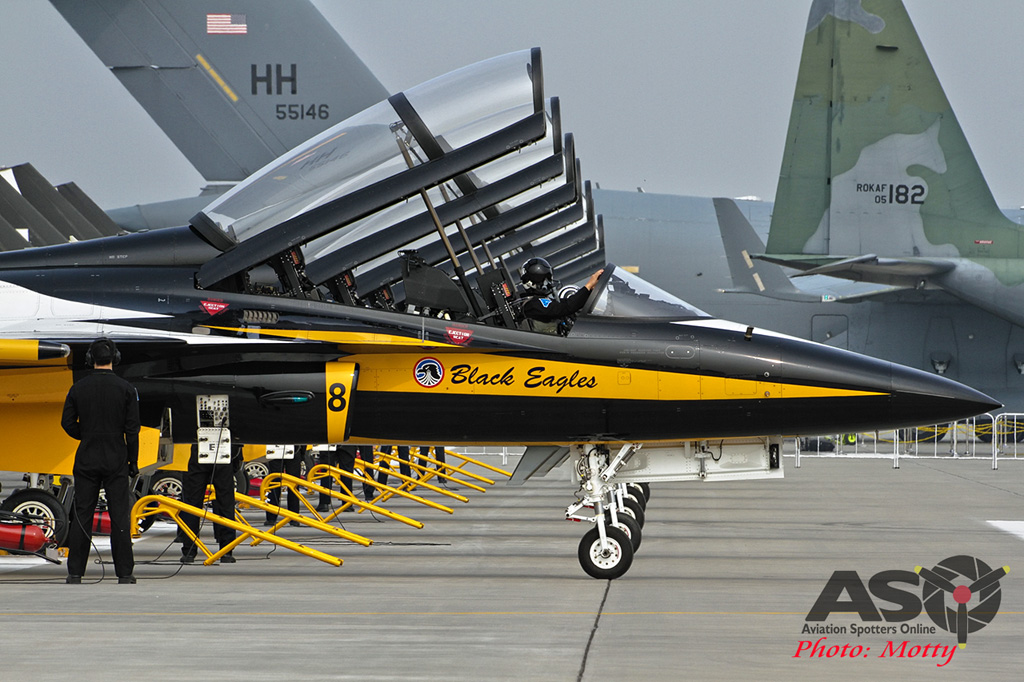 Each year, in December, the Headquarters reviews the many requests for the team to appear during the following year and makes their decisions based on the location, significance and character of each event to come up with the team’s schedule for the year (mostly between April to October). Other considerations are that the team will only perform at (at most) two different locations within a week and usually only one show per day, so the team usually ends up making between 40 and 50 performances each year. For shows where the team needs to relocate its aircraft away from their home base at Wonju, the ground crews and support staff will usually deploy with the assistance of a C-130 Hercules. For display where the aircraft do not need to land, they have a dedicated team bus and other support vehicles to make the journey by road.
Each year, in December, the Headquarters reviews the many requests for the team to appear during the following year and makes their decisions based on the location, significance and character of each event to come up with the team’s schedule for the year (mostly between April to October). Other considerations are that the team will only perform at (at most) two different locations within a week and usually only one show per day, so the team usually ends up making between 40 and 50 performances each year. For shows where the team needs to relocate its aircraft away from their home base at Wonju, the ground crews and support staff will usually deploy with the assistance of a C-130 Hercules. For display where the aircraft do not need to land, they have a dedicated team bus and other support vehicles to make the journey by road.
 South Koreans are justifiably proud of their Air Force’s national display team and are very vocal in their support, with cheers and applause both during the display and after the team’s return. There are only so many ways and manoeuvres that it must be possible to safely display such a large formation of jet aircraft and, no doubt, the Black Eagles routines share a lot of similarities with many other display teams throughout the world but the precision and expertise that makes for a fantastic display are obvious. In addition, the relatively large number of aircraft in the team makes it possible to have two solo-pairs, enabling a good variety of large, flowing, formation manoeuvres and faster, more dynamic passes, with something always happening to keep the audience’s attention focused on the show. And, of course, like many of the teams using a fast jets (particularly ones with an afterburner), there is always the “sneak pass”, which is an absolute ripper (as long as you know it’s coming 😉 ).
South Koreans are justifiably proud of their Air Force’s national display team and are very vocal in their support, with cheers and applause both during the display and after the team’s return. There are only so many ways and manoeuvres that it must be possible to safely display such a large formation of jet aircraft and, no doubt, the Black Eagles routines share a lot of similarities with many other display teams throughout the world but the precision and expertise that makes for a fantastic display are obvious. In addition, the relatively large number of aircraft in the team makes it possible to have two solo-pairs, enabling a good variety of large, flowing, formation manoeuvres and faster, more dynamic passes, with something always happening to keep the audience’s attention focused on the show. And, of course, like many of the teams using a fast jets (particularly ones with an afterburner), there is always the “sneak pass”, which is an absolute ripper (as long as you know it’s coming 😉 ).
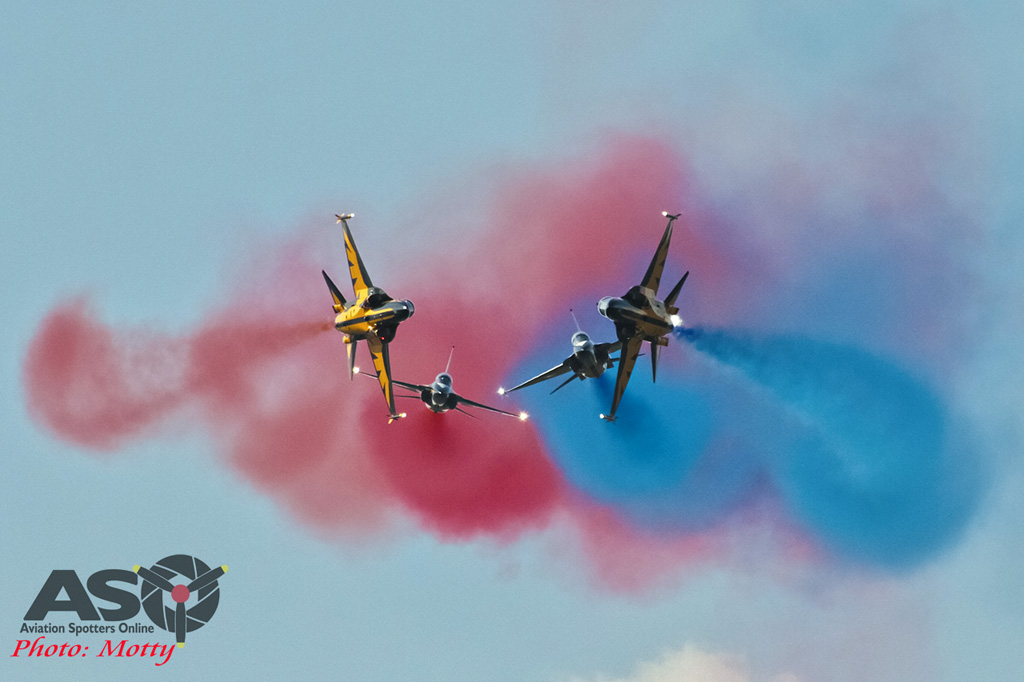 When I asked if there was any chance that we might see the Black Eagles “down-under” in Australia any time soon, some members replied that they would very much like to be invited to perform there as they have heard a lot about our wonderful, clear skies (air quality can be a serious issue in Korea sometimes, with dust and other contaminants from various places creating serious visibility restrictions. This was particularly highlighted at the 2015 ADEX where, on some days of the show, visibility was so poor that many of the displays [including the Black Eagles] had to be cancelled).
When I asked if there was any chance that we might see the Black Eagles “down-under” in Australia any time soon, some members replied that they would very much like to be invited to perform there as they have heard a lot about our wonderful, clear skies (air quality can be a serious issue in Korea sometimes, with dust and other contaminants from various places creating serious visibility restrictions. This was particularly highlighted at the 2015 ADEX where, on some days of the show, visibility was so poor that many of the displays [including the Black Eagles] had to be cancelled).
 The Australian team from Paul Bennet Airshows (known as MaxxG in Korea) have formed a good relationship with the Black Eagles during their many visits for shows in Korea, with some members of the ROKAF team showing a great interest in the vastly different aerobatic experience of the tiny Pitts Special, something still out of reach for most aviators in Korea. For their own part, the PBA team have certainly made inquiries about the possibilities of the Korean team travelling to Australia.
The Australian team from Paul Bennet Airshows (known as MaxxG in Korea) have formed a good relationship with the Black Eagles during their many visits for shows in Korea, with some members of the ROKAF team showing a great interest in the vastly different aerobatic experience of the tiny Pitts Special, something still out of reach for most aviators in Korea. For their own part, the PBA team have certainly made inquiries about the possibilities of the Korean team travelling to Australia.
 Personally, I cannot tell you how much I would love to have the opportunity to see and photograph this great team and their beautiful aircraft against a clear blue Australian sky and I can only hope that someone will, one day, give them an invitation to pay us a visit. 😉
Personally, I cannot tell you how much I would love to have the opportunity to see and photograph this great team and their beautiful aircraft against a clear blue Australian sky and I can only hope that someone will, one day, give them an invitation to pay us a visit. 😉
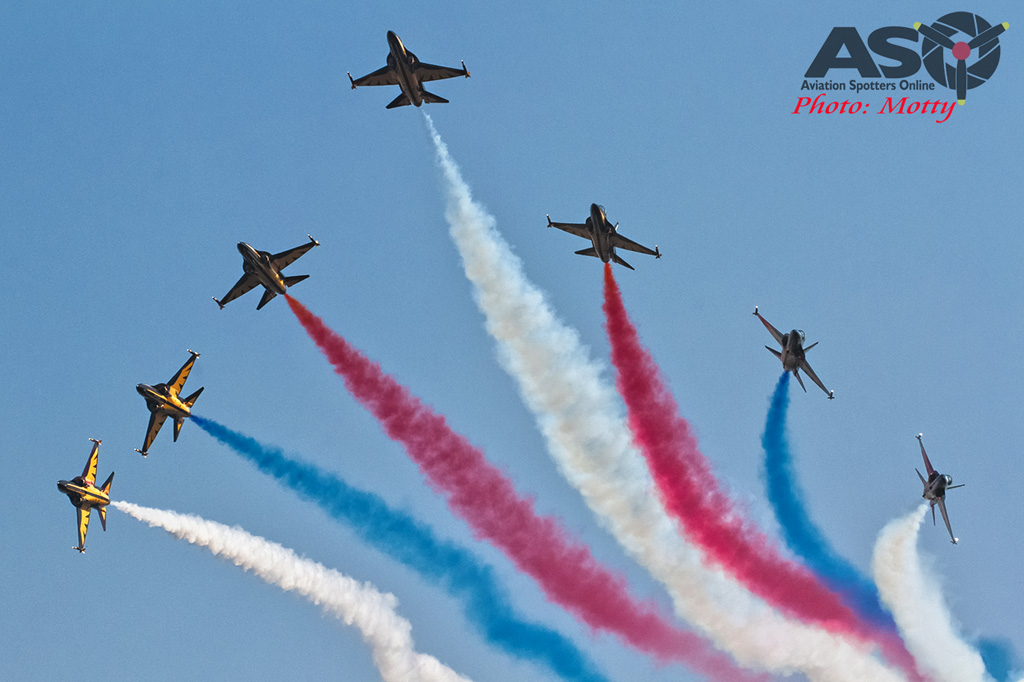 My thanks to the Black Eagles team for their generosity and time in helping me to be able to present this article and to Paul Bennet Airshows / MaxxG Airshows for the many opportunities to see and meet the Black Eagles over the years.
My thanks to the Black Eagles team for their generosity and time in helping me to be able to present this article and to Paul Bennet Airshows / MaxxG Airshows for the many opportunities to see and meet the Black Eagles over the years.
Thanks for reading.
Motty.



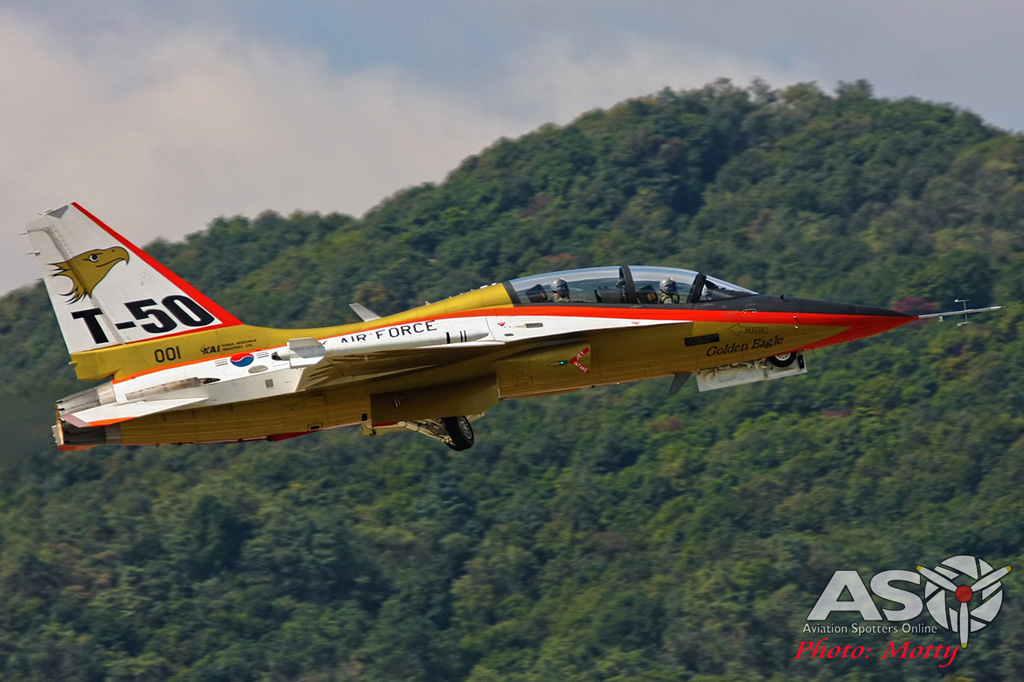



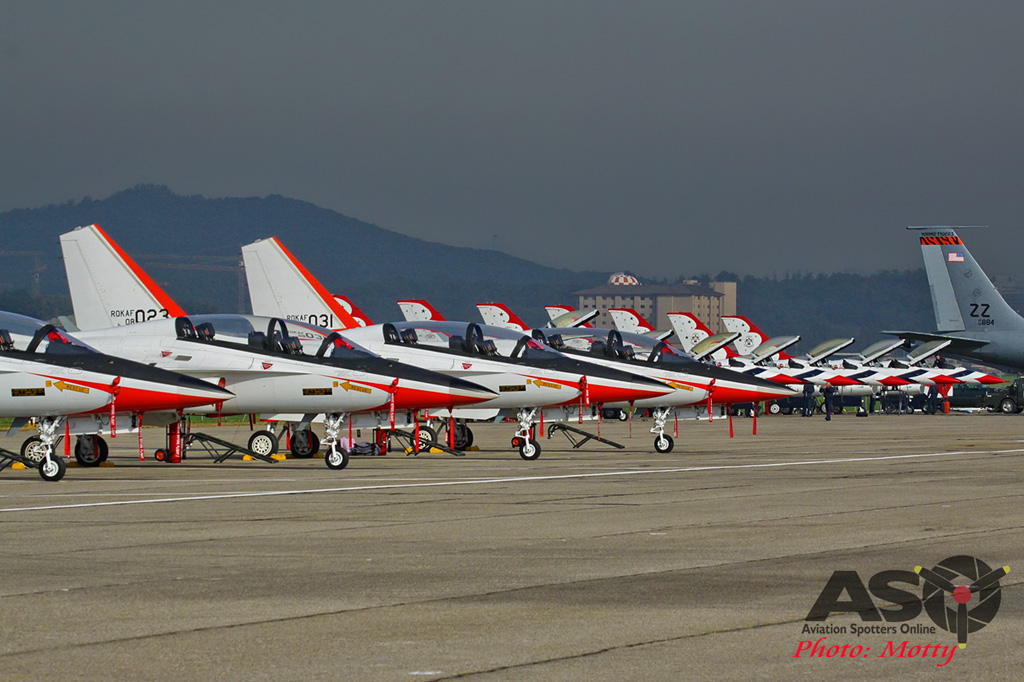
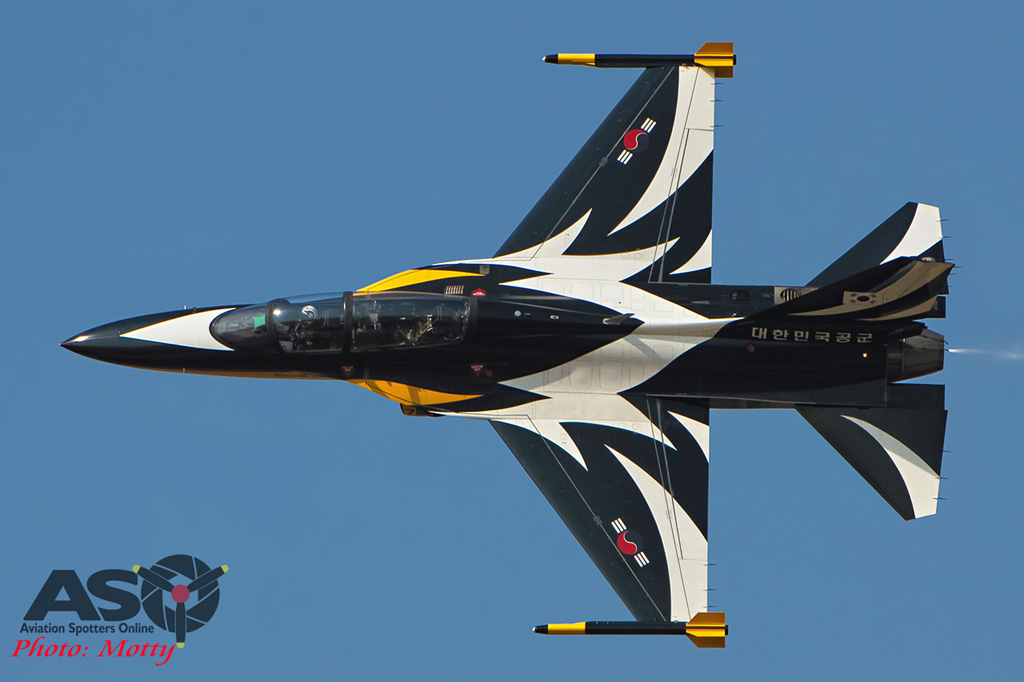



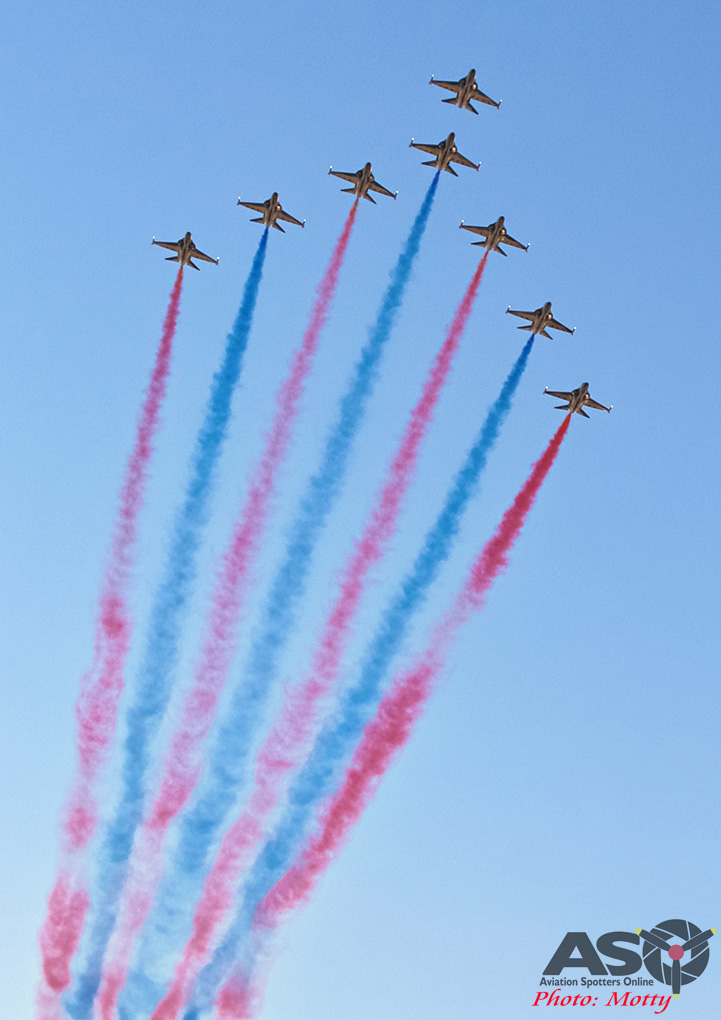










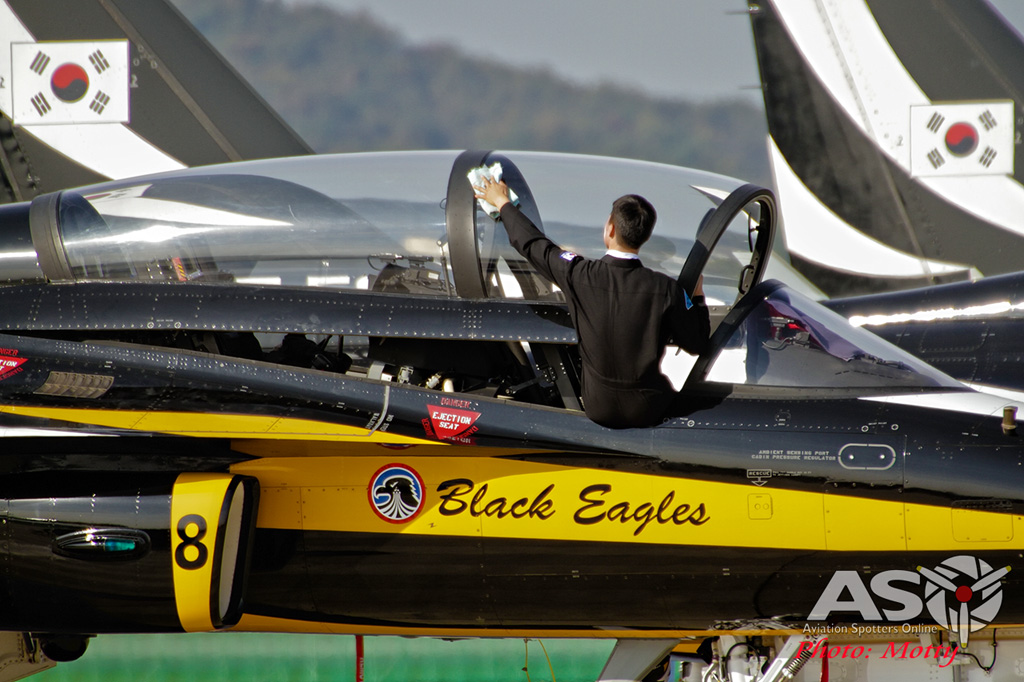






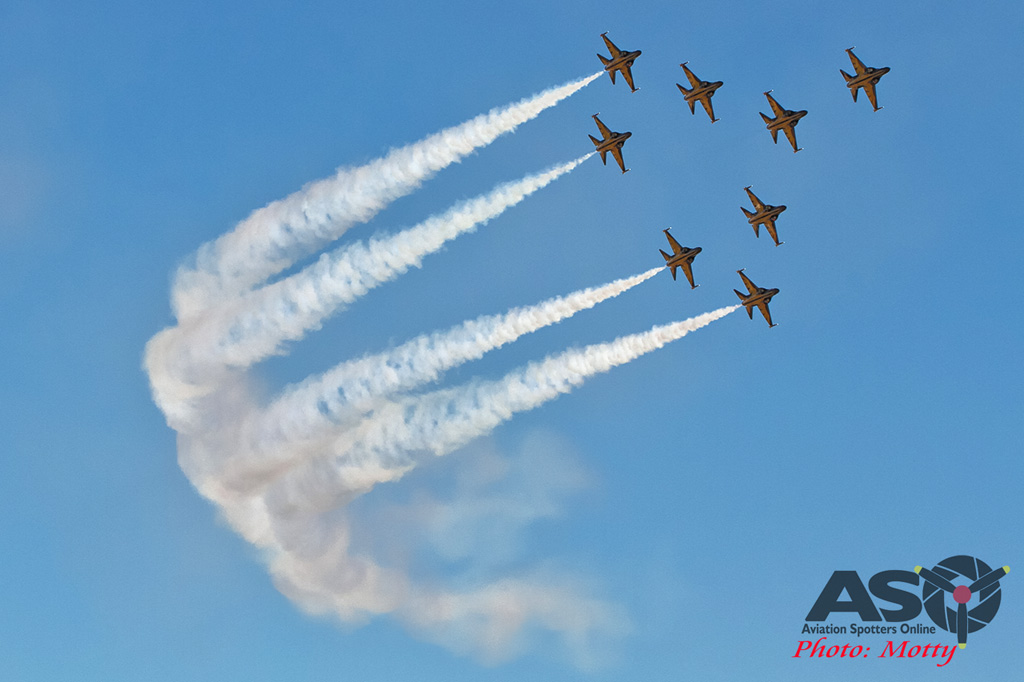





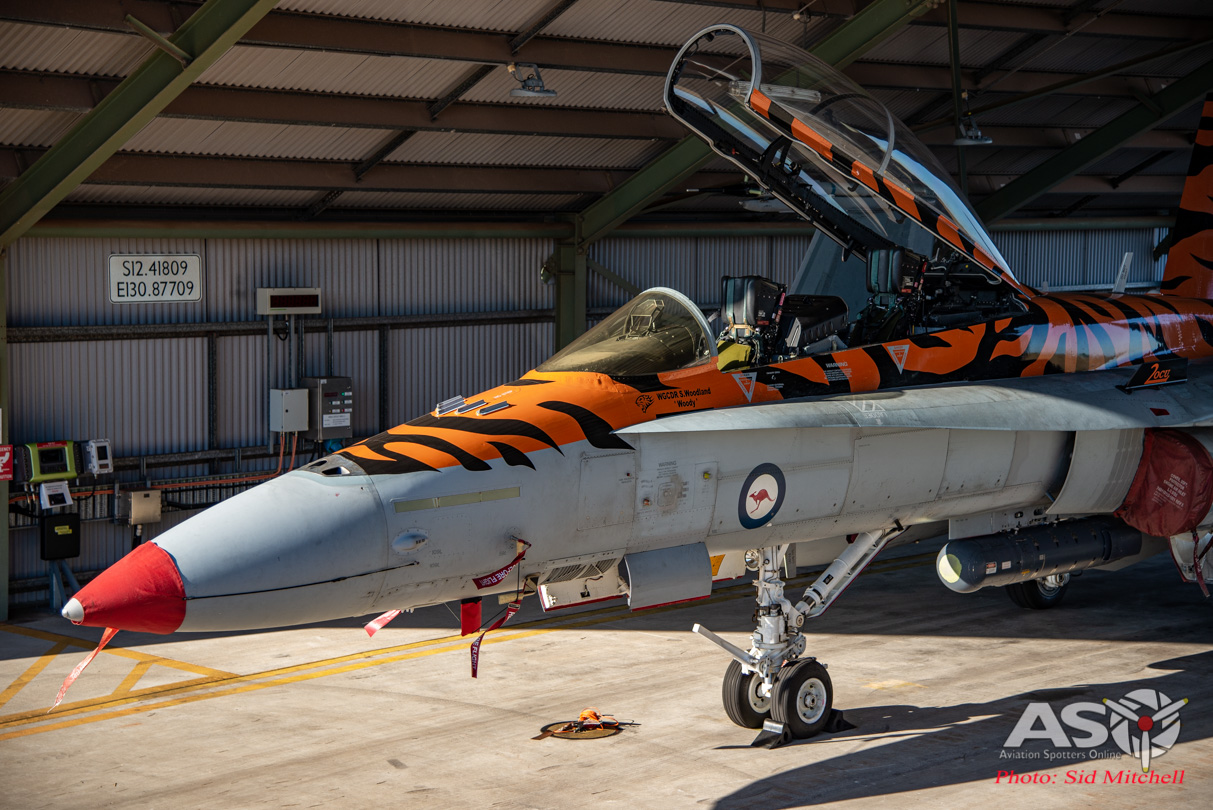




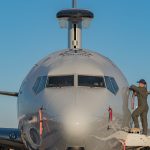



Great set there Motty! I expected no less. Only thing remaining now is to hitch a ride with them. Well done!
Thanks very much Kostas. I can only dream. 😉